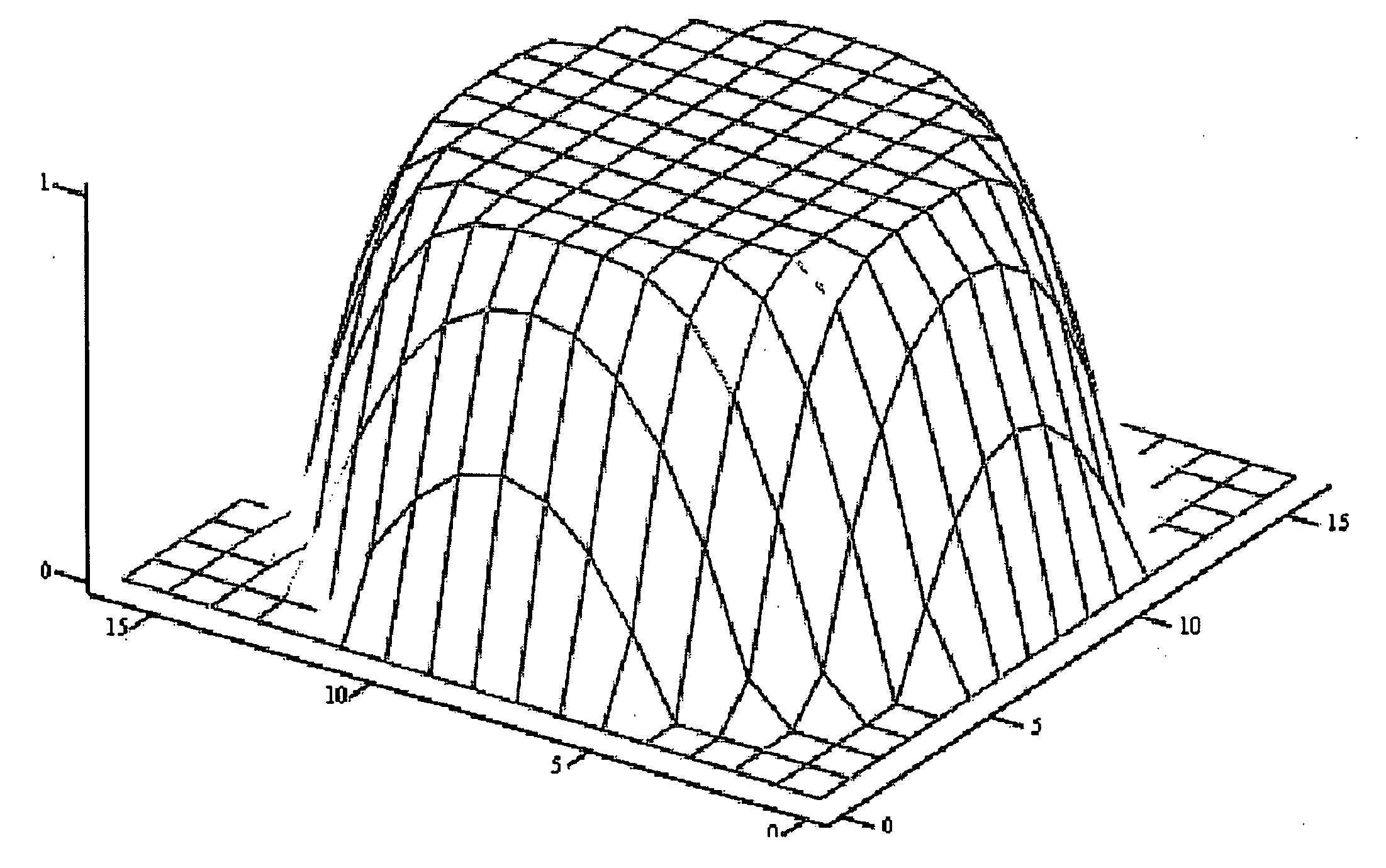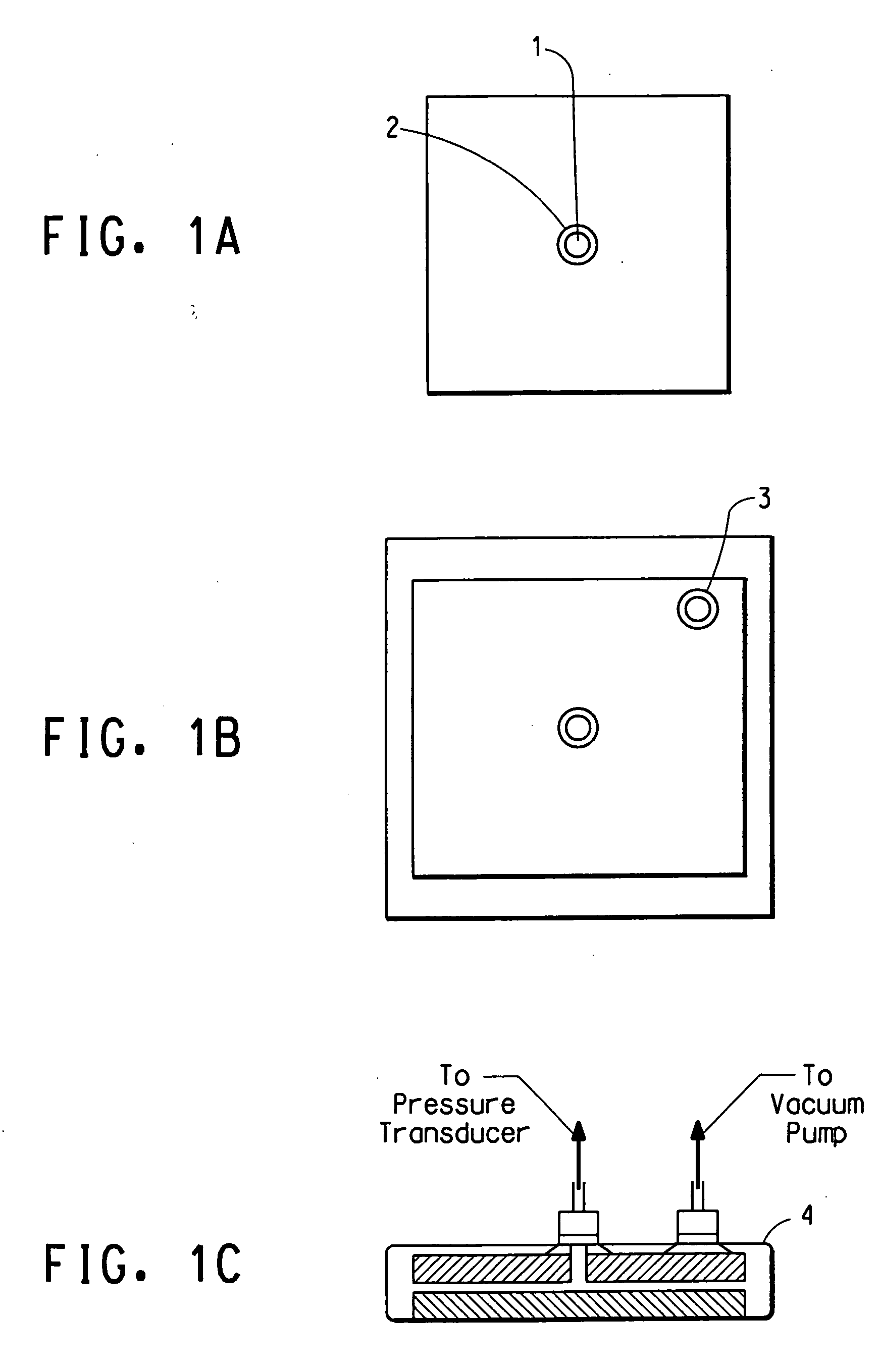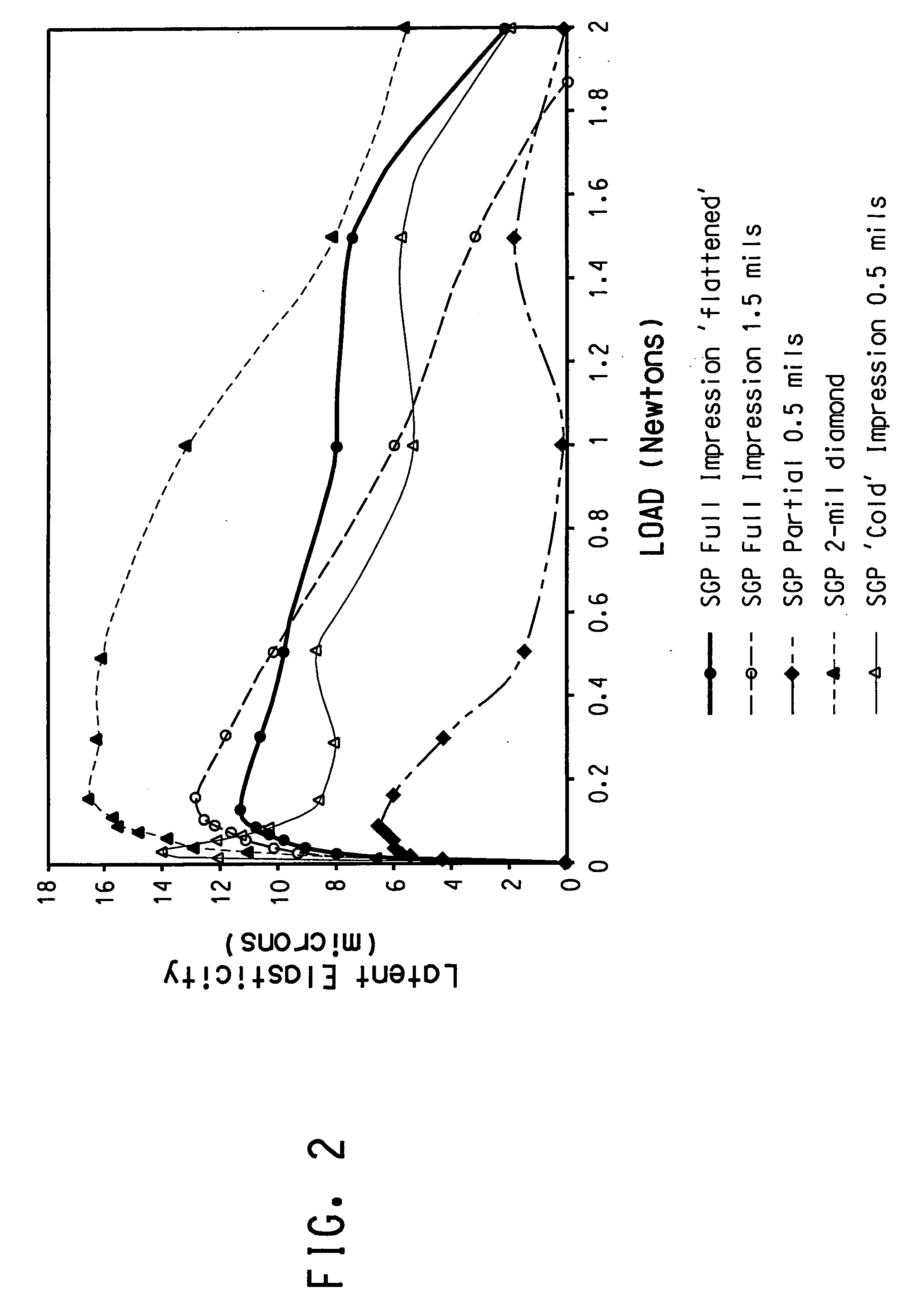Interlayers for laminated safety glass with superior de-airing and laminating properties and process for making the same
a technology of laminated safety glass and interlayers, which is applied in the field of interlayers for laminated safety glass with superior de-airing and laminating properties and process for making the same, can solve the problems of difficult to choose an interlayer with optimal, inconvenient to obtain edge seals, and may encounter problems for laminaters
- Summary
- Abstract
- Description
- Claims
- Application Information
AI Technical Summary
Benefits of technology
Problems solved by technology
Method used
Image
Examples
example 1
Surface Roughness Characterization
[0038] Surface roughness, Rz, can be expressed in microns by a 10-point average roughness in accordance with ISO-R468 of the International Organization for Standardization. Roughness measurements are made using a stylus-type profilometer (Surfcom 1500A manufactured by Tokyo Seimitsu Kabushiki Kaisha of Tokyo, Japan) as described in ASME B46.1 - 1995 using a trace length of 26 mm. ARp and ARt, and the area kurtosis are measured by tracing the roughness over a 5.6 mm×5.6 mm area in 201 steps using the Perthometer Concept system manufactured by Mahr GmbH, Gottingen, Germany.
De-Airing Efficiency at Room Temperature
[0039] De-airing efficiency of an interlayer with a specified pattern is determined using an apparatus which allows the absolute pressure of the interstitial space in an assembly to be measured (FIG. 1). The interlayer to be tested is assembled as a normal assembly, except that the top plate of glass has a hole (1) drilled through its cen...
example 2
[0043] Various ionomer sheets having an methacrylic acid content of approximately 19% and a degree of neutralization of 37% with sodium ion were obtained in a size of 600-mm square at a thickness of about 2.3-mm were placed between two sheets of abrasion-resistant coated polycarbonate (Lexan® MR 3 / 16″ thickness). This sandwich was then vacuum-bagged using standard techniques and a vacuum was drawn on the assembly for 30 minutes at about 30 torr absolute pressure. After this deairing step, the vacuum-bagged assembly was then heated in a convection air oven to 120 C. for 45 minutes after which it was cooled back down to room temperature while under vacuum. This procedure was utilized to produce ionomer sheeting possessing low haze and smooth, essentially parallel surfaces. These materials were used as precursors for then embossing with textured rubber sheets as described previously, metal mesh and other materials were used to create a variety of roughened / textured surfaces to further ...
example 3
[0046] A DuPont Thermomechanical Analyzer was used to make delicate measurements of the degree of compression as a function of the applied force and parameters of time and temperature. Some of the ‘bulk’ flow properties are displayed in Table I where the displacement of the TMA probe was indexed at 20 and 60% of the respective thickness of the interlayer under study (PVB and lonomer). At each force level, the temperature was ramped at 5 C. / minute from −20 C. to 200 C. and the temperature was recorded when each of the compression indices was obtained.
TABLE 1Temperature (C.) for Probe to Reach 20%and 60% Compression of InterlayerWeightThicknesson ProbePressureTEMP. @ −60%TEMP. @ −20%(gms.)(psi)PVBIonomerPVBIonomer30.9151142134114154.4131114108975014.51131038991681198.158856480
FIG. 3 is a diagram of the degree of elastic recovery which occurs after compressing the respective surface texture as a function of residual load. There exists a minimum amount of force (pressure) that is nece...
PUM
| Property | Measurement | Unit |
|---|---|---|
| width | aaaaa | aaaaa |
| width | aaaaa | aaaaa |
| width | aaaaa | aaaaa |
Abstract
Description
Claims
Application Information
 Login to View More
Login to View More - R&D
- Intellectual Property
- Life Sciences
- Materials
- Tech Scout
- Unparalleled Data Quality
- Higher Quality Content
- 60% Fewer Hallucinations
Browse by: Latest US Patents, China's latest patents, Technical Efficacy Thesaurus, Application Domain, Technology Topic, Popular Technical Reports.
© 2025 PatSnap. All rights reserved.Legal|Privacy policy|Modern Slavery Act Transparency Statement|Sitemap|About US| Contact US: help@patsnap.com



